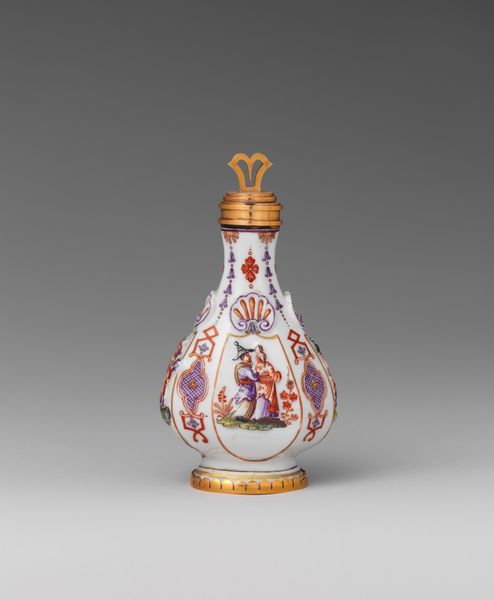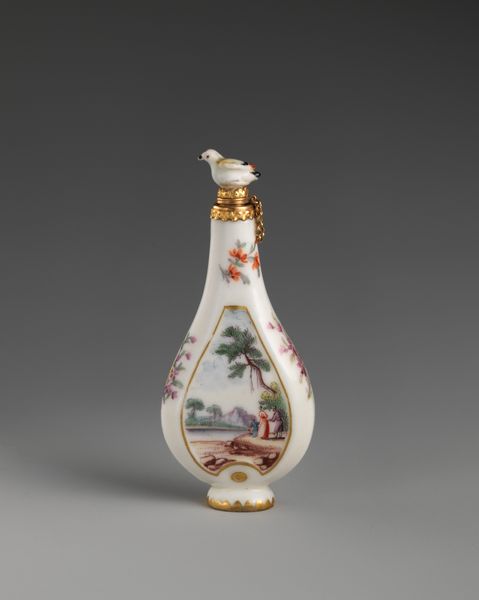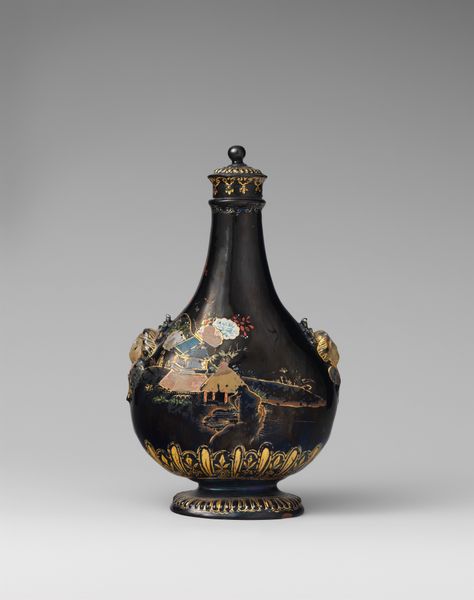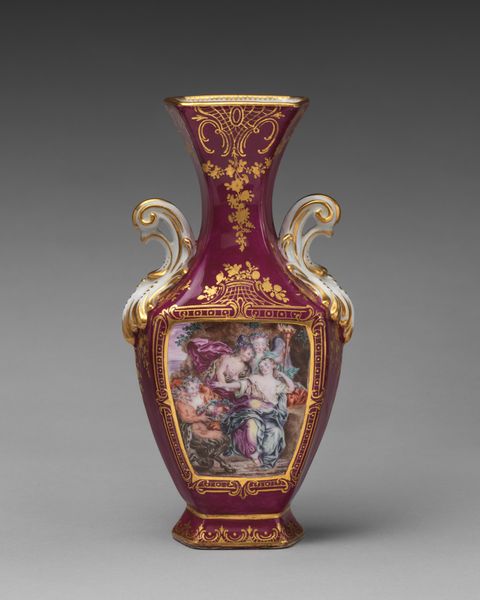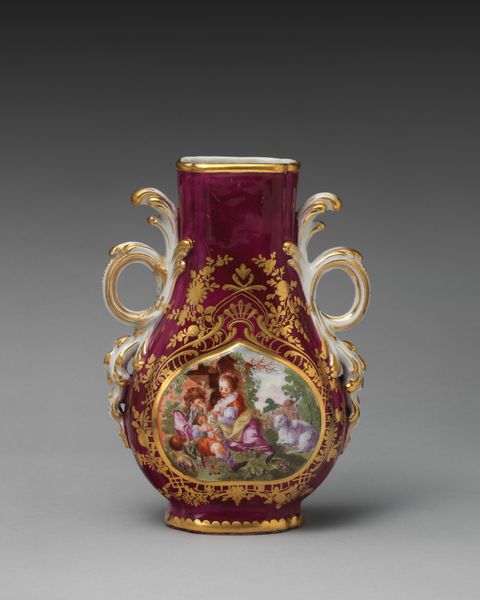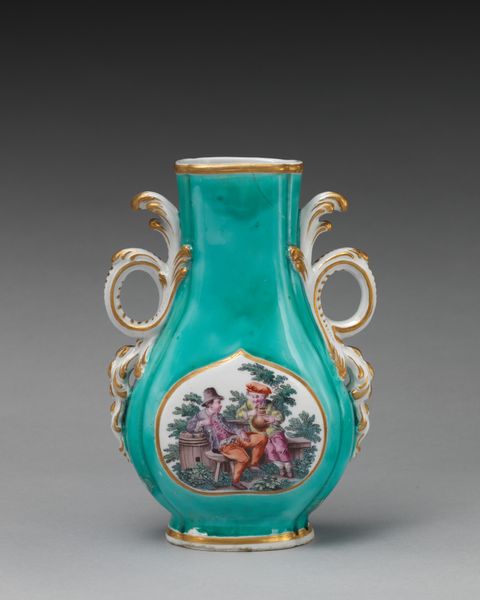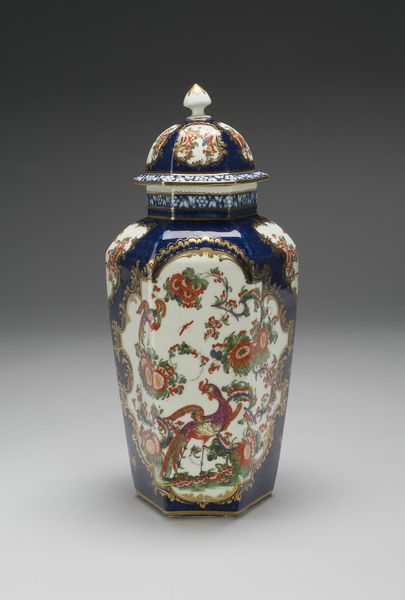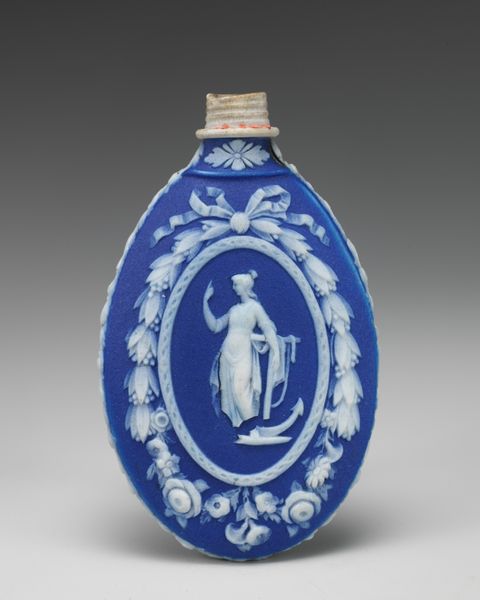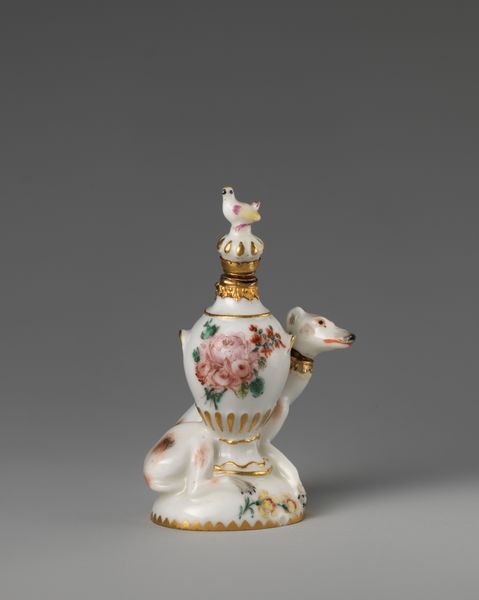
ceramic, porcelain, sculpture
#
portrait
#
ceramic
#
porcelain
#
sculpture
#
decorative-art
#
rococo
Dimensions: 3 1/2 × 1 5/8 in. (8.9 × 4.1 cm)
Copyright: Public Domain
Curator: Welcome. Today we are observing a delightful flagon created between 1760 and 1770 by the Chelsea Porcelain Manufactory. You can find it here at the Metropolitan Museum of Art. Editor: My first thought is how intensely decorative it is, how it speaks to rococo aesthetics but, also, just makes me wonder what it held and for whom? The textures also looks like it would have had a nice weight to it in one's hand. Curator: The Chelsea Porcelain Manufactory was of course a major producer of luxury goods for the English elite. Flagons like this weren’t merely functional, but rather statements of wealth and status, particularly during a period of burgeoning global trade. Editor: Exactly. The level of skill embedded in the production! Look at the evenness of the porcelain and then all that detailed ornamentation, especially the gilding. Someone dedicated quite a bit of time and expertise to the creation of this flagon, not to mention what the people extracting raw materials must have gone through. Curator: Indeed. The figure in the central cartouche, seemingly a noble woman resting near a tree. Consider this too as not just about a pretty thing but also consider what sorts of ideals of beauty and leisure the piece puts on display. It seems quite staged and poised. Editor: And the social context of that imagery, too! This piece naturalizes the hierarchies that granted elites such leisure, all smoothed out and rendered innocuous on a porcelain surface. Though there’s always that tension when labor is used to produce commodities. Curator: Such production also involved the shaping of identity. Owning such pieces allowed individuals to position themselves within these hierarchies, to communicate messages about themselves. The piece seems designed for such communication. Editor: So true, from material sourcing to finished product, we’re looking at more than just a bottle here. We're looking at networks of human labour that spanned continents. Thinking about all of that— it really puts the supposed "delicacy" of porcelain into an entirely new, rather intense light. Curator: Precisely! And perhaps by understanding this material network, and the piece’s display of ideals and political power, we can develop a new vision for what role art can play. Editor: Here's to rethinking pretty things and the messy networks they bring to the surface.
Comments
No comments
Be the first to comment and join the conversation on the ultimate creative platform.
